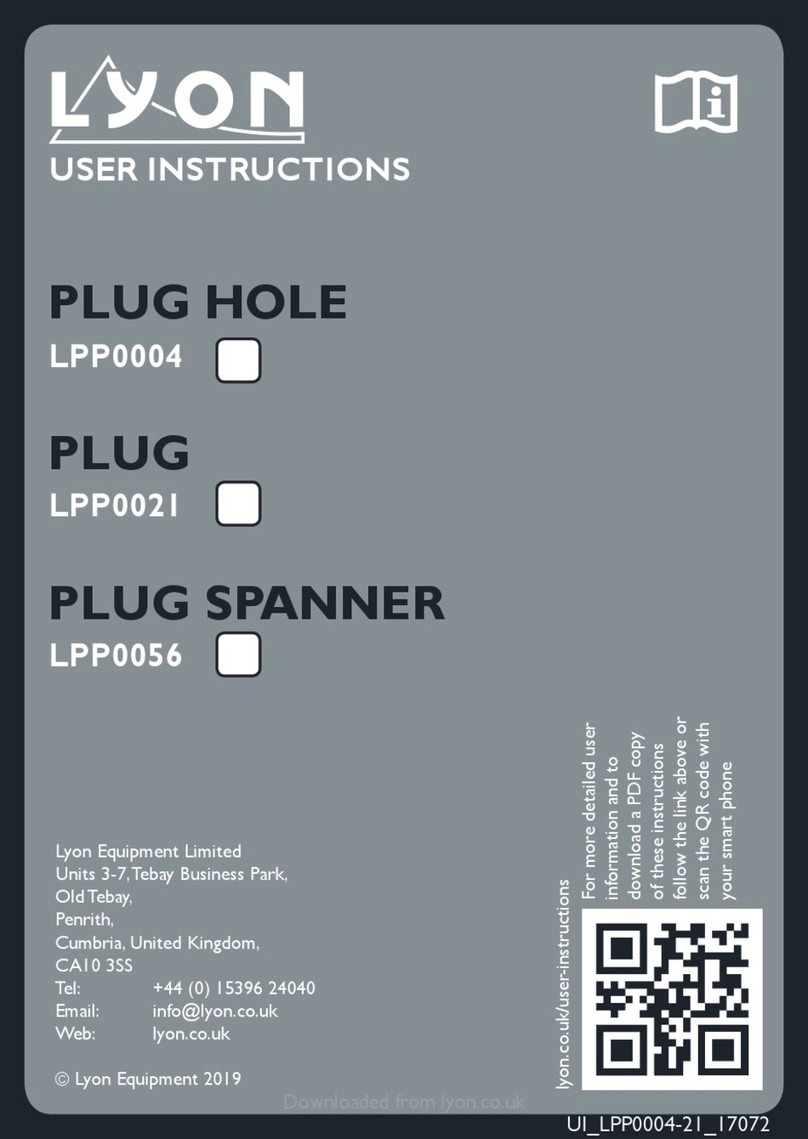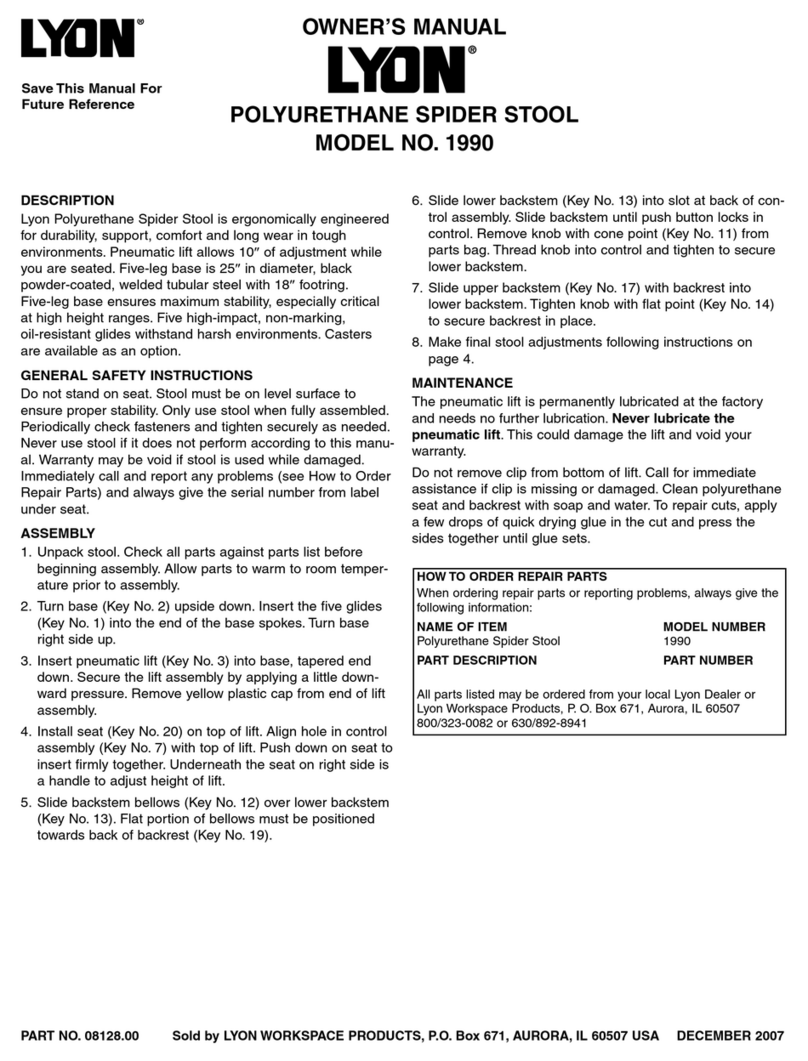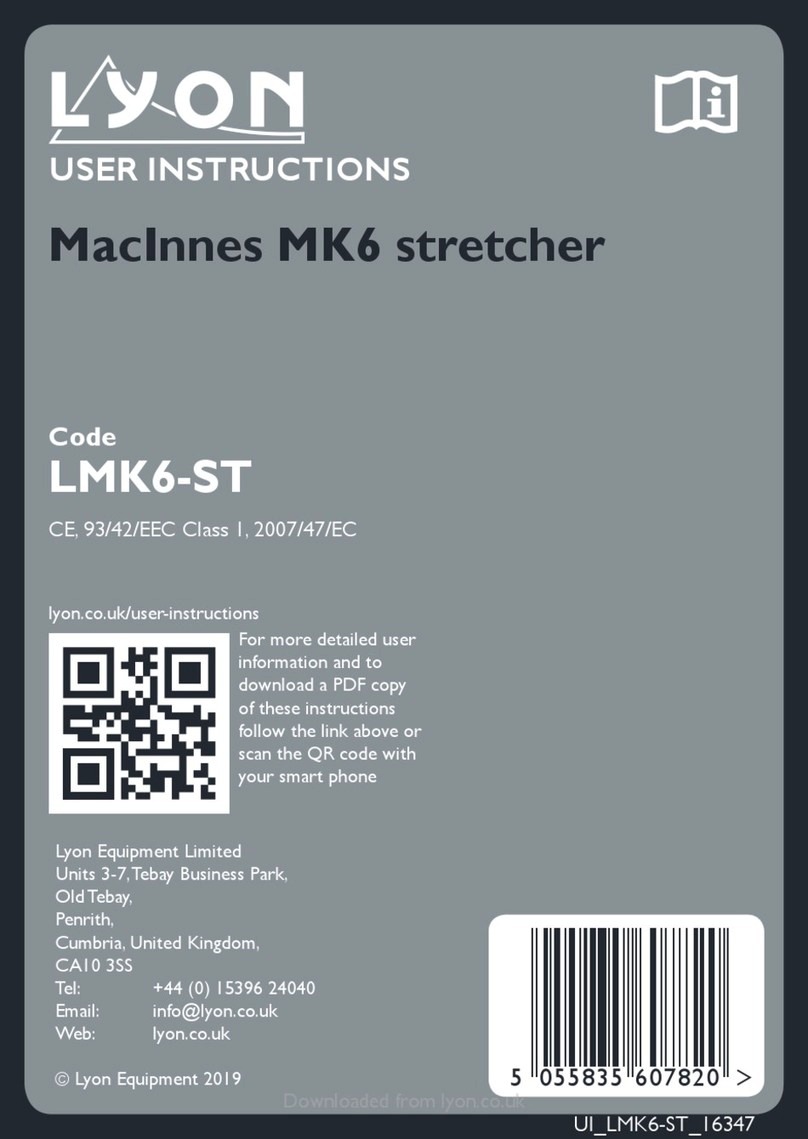
9
Figure shows left pin in good working
condition.The right pin should be
retired due to wear and detent pins not
properly working.
Textile items - Leg Restraint
Straps
The Leg Restraint Strap must be
complete with all end connections, and
must fully adjust and lock over its full
range of adjustment.
Check the webbing visually and by
passing the straps slowly through the
hands to detect damage, e.g. cuts in
the edges of the webbing, abrasion,
cuts across the face of the webbing,
softening or hardening of bres,
ingress of contaminants, broken, cut
and worn threads in the stitching. Pay
particular attention to areas where the
webbing is in contact with connectors,
buckles and the Leg Restraint Strap
Attachment Point. Check the webbing
for discolouration, which could be the
result of chemical or UV damage.
The metallic elements should be
inspected for correct function, signs
of overloading and damage, e.g. wear,
corrosion, cracking, weld failure,
abrasion, sharp edges, deformity.
Any of these defects may affect the
performance of the OBELISK.
Lubrication
All leg hinge assemblies and Locking Pins
should be lightly lubricated after each
use. Use a liquid lubricant with good
adhesion, e.g. light machine oil.
Apply sparingly and wipe off any excess.
Chemicals
If the OBELISK comes into contact with
any chemicals or contaminants, including
biohazard, remove it from service and
quarantine.
Taking appropriate precautions, clean
the metallic parts of the OBELISK to
remove the contaminants and prevent
contamination of other items in the
safety chain.
Ensure beforehand that the cleaning
process and cleaning materials will not
damage the OBELISK.
All textile parts in contact with
chemicals or contaminants, including
biohazard cannot be effectively cleaned
and must be destroyed.
Spare parts and repairs
A limited number of spare parts are
available for user-tment. A repair
service is also offered. Contact the
manufacturer for details.
Accessories
A range of accessories are available for
the OBELISK. See www.lyon.co.uk for
information.
Materials
The body of the OBELISK is made from
stainless steel.
The legs are made from aluminium alloy.
The Locking Pins are made from
stainless steel.
The Leg Restraint Straps are polyester.
The Leg Restraint Strap quick links
are steel.
UI_LPP0003_19092.indd 9 04/04/2019 11:28:43
Downloaded from lyon.co.uk































